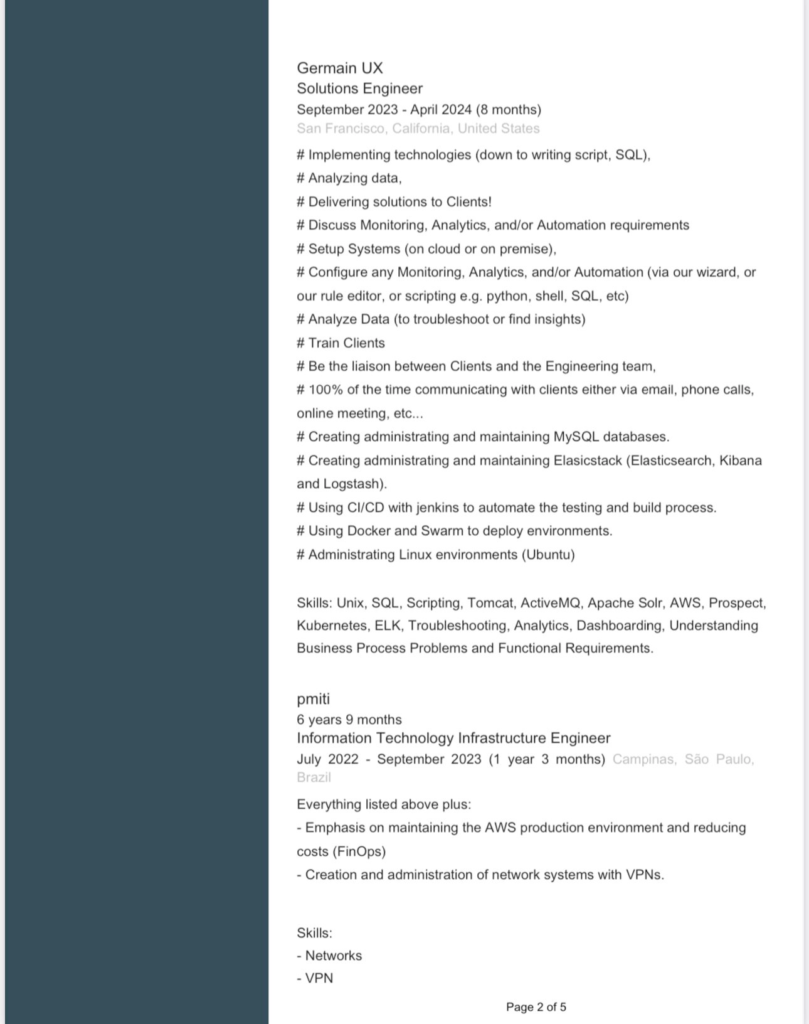First of all, I speak from personal experience, as my friends and I have been doing this, and it is working. If it doesn’t work in your case, I can’t explain why. I’ll share what we have been doing and what has actually been delivering results.
Let’s start with the basics: have your profile in both Portuguese and English if you want to work abroad. Preferably, keep English as the default language. If you want to go even further, delete your Portuguese profile entirely.
Shorten your profile URL. In my case, I set it to /pedro-renan-mussato, making it easier to read and recognize. Just by looking at your name, a recruiter would know how to find your LinkedIn.
Use a recent and professional profile picture—simple, with no unnecessary embellishments.
Have a professional cover photo. It doesn’t have to be from the company you work for, but having a cover image adds credibility.
Your headline (the text right below your name) should be short and direct. Pick 5 to 8 key skills you are recognized for and include them. This field is one of the parameters used by LinkedIn’s algorithm, so add terms you think tech recruiters would search for to find you.
Regarding location, some say that setting your profile to another country increases your chances of getting interviews there—and that’s true. However, I advise against it. I set my location to the UK because I wanted to work there. I landed two interviews, but once they noticed my real location didn’t match my LinkedIn, I was disqualified. After that, I reverted to my actual location.
Mark yourself as open to work, but disable the “Open to Work” banner. Instead, specify your job search preferences (desired roles, locations, and work mode: onsite, remote, or hybrid) and save it as “only visible to recruiters”. This way, only tech recruiters can see that you’re job hunting, not your current employer.
Your About section should be more detailed, expanding on the key points in your headline and including additional skills, knowledge, and experience.
For reference, you can check out my LinkedIn. My last two jobs came through LinkedIn, and I still receive job offers weekly, so I believe I’m on the right path:
https://www.linkedin.com/in/pedro-renan-mussato
(UPDATE – 02/14/2025)
Nowadays, I am no longer searching for IT jobs with the same focus. My goal is now to secure management-level positions. Therefore, do not use my current LinkedIn profile as a reference, as I have shifted my career trajectory from technical roles to management. Instead, refer to this updated guide:





Always remember to use plenty of keywords that attract recruiters from the field you want to work in.
(END OF THE 02/14/2025 UPDATE)
To achieve this, we rely on just two things: increasing connections with recruiters and engaging on the platform. From my experience, applying for jobs directly on LinkedIn made no difference—LinkedIn job postings don’t work.
Increasing Connections
Every week, connect with 100 tech recruiters on LinkedIn (this is the weekly connection limit). Do this until you have around 2,000 connections. If you already have a solid network, aim for at least 1,500 connections exclusively with tech recruiters.
To find them:
- Use the LinkedIn search bar, type “tech recruiter”
- Filter by people, then first- and second-degree connections
- Select the country where you want to land a job
(UPDATE – 04/03/2024)
Lately, I have been receiving a lot of job offers from Latin American tech recruiters, especially from Mexico and Brazil, offering international opportunities. It seems that the “new method” is to hire local recruiters to source candidates locally. Again, this is my personal experience—I can’t say it applies to everyone, but lately, expanding my network in Brazil has helped me a lot.
(END OF THE 04/03/2024 UPDATE)
Why do all this?
Based on our analysis, many LinkedIn job postings are fake. Companies post them to make it seem like they are growing, which helps them secure more investor funding. However, tech recruiters are real—they are hired by companies to find specific talents.
Why should your connections be first- or second-degree?
Following the logic of graph-oriented NoSQL databases, the fastest data retrieval happens through highly connected nodes. In simple terms, the closer you are to a tech recruiter and their connections, the higher the chances your profile will show up when they search for “C# Developer” or any other role.
Why is location important?
This is simple: tech recruiters tend to connect with each other. If you have a high density of tech recruiter connections in a specific geographic area, you increase the likelihood of appearing first when one of them searches for a role like “C# Developer”.
Engaging on LinkedIn
Engagement is key:
- 1 post per week
- 1 comment per day
- 1 interaction (like, support, etc.) per day
- Reply to all messages, even if it’s just to say, “Not interested.”
Based on our research, LinkedIn prioritizes profiles that interact more. This helps recruiters by showing them the most responsive candidates first, optimizing their search time.
Patience: This is a long-term process
This is a long-term investment with a minimum return period of 2 months. Why?
- It takes at least 15 weeks to add 1,500 tech recruiters (100 per week is the limit).
I will continue updating this article as I get more insights and feedback from my friends…
Leave a Reply